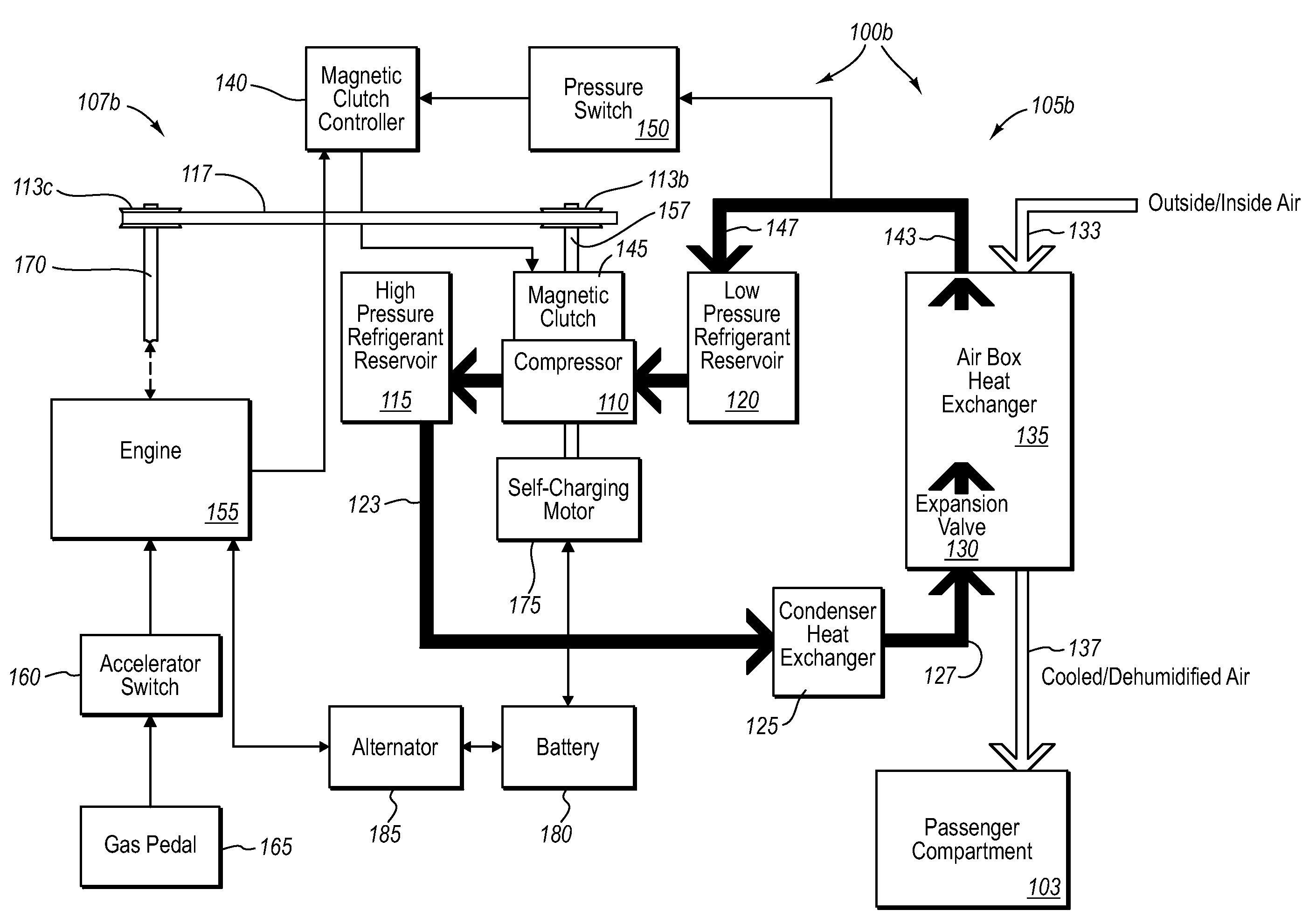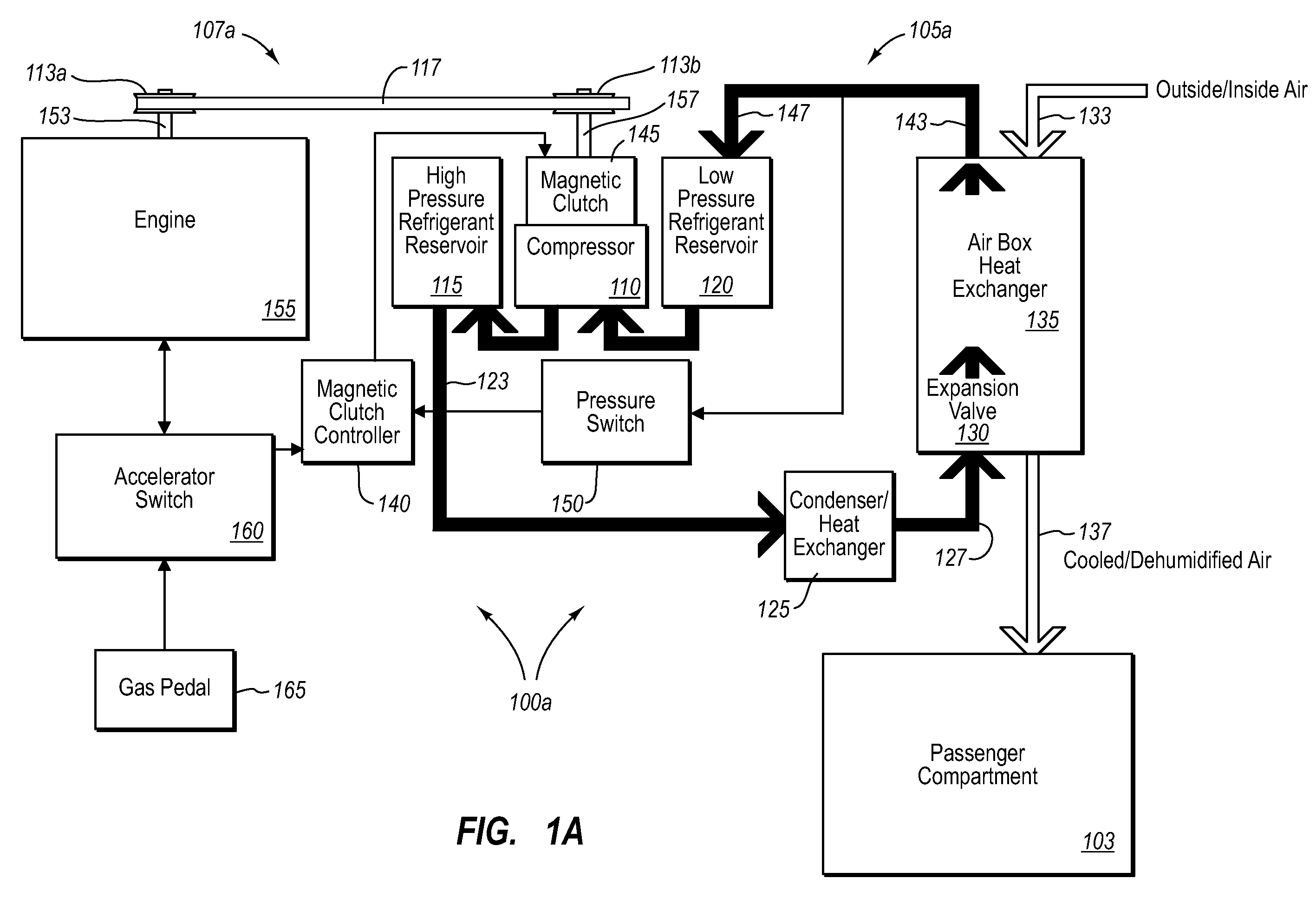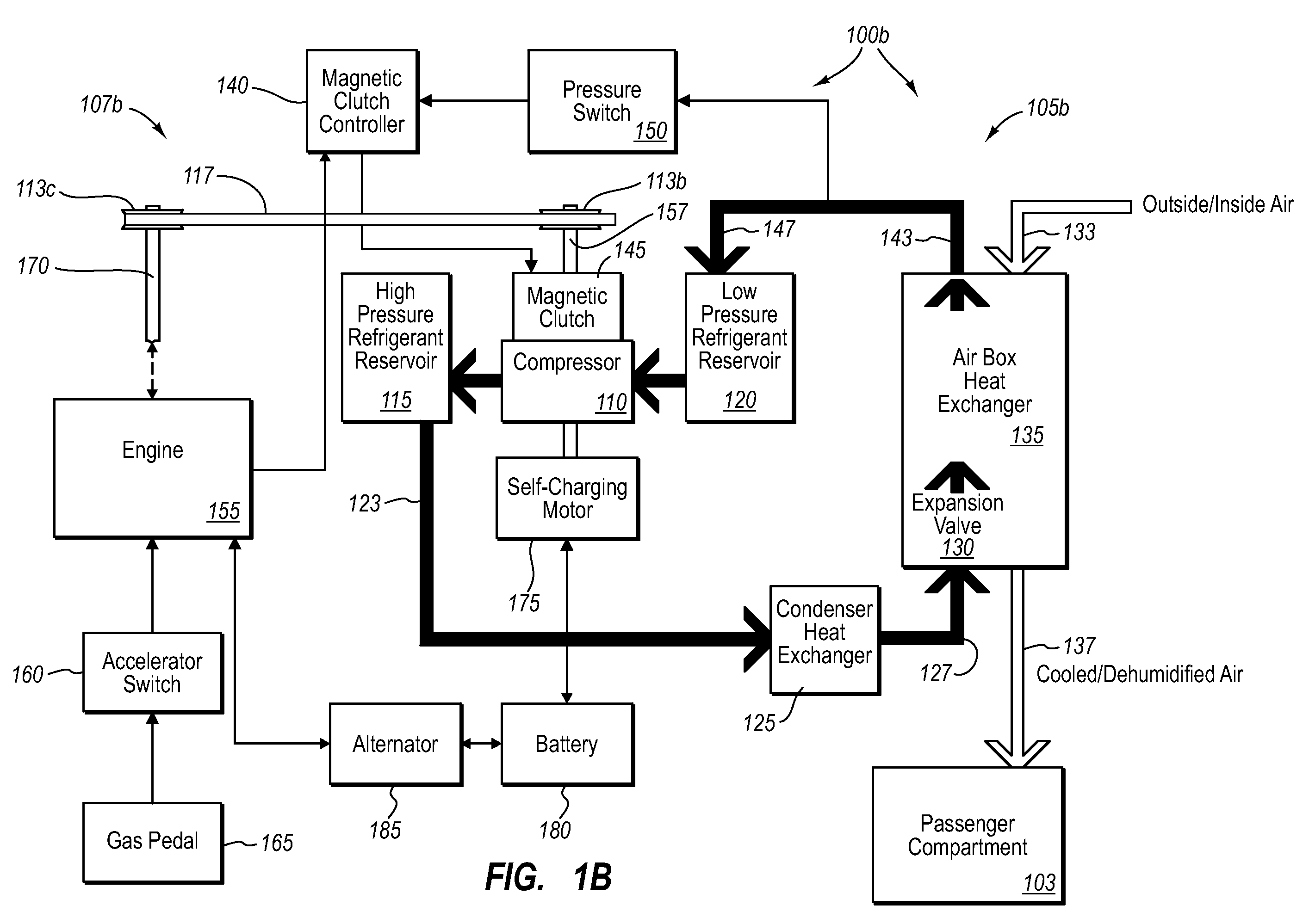Air conditioning system operating on vehicle waste energy
a technology of air conditioning system and vehicle waste energy, which is applied in the direction of reciprocating combination engines, applications, lighting and heating apparatus, etc., can solve the problems of reducing the overall vehicle fuel efficiency (e.g., mpg/kpl) by 25 percent or more, increasing the load on the engine, and reducing the overall vehicle fuel efficiency. , the effect of reducing the load
- Summary
- Abstract
- Description
- Claims
- Application Information
AI Technical Summary
Benefits of technology
Problems solved by technology
Method used
Image
Examples
Embodiment Construction
[0026]Implementations of the present invention extend to systems, apparatus, and methods configured to mitigate fuel economy issues associated with using air conditioning systems in conventional vehicles. In particular, implementations of the present invention include readily-addable, low-cost components configured to coincide or constrain compressor (e.g., of air conditioning systems) operations principally with the presence of passive energy sources (i.e., vehicle waste mechanical kinetic energy—“waste energy”), and independent of braking actions. In one implementation, an air conditioning system can also be configured to use multiple sources of passive energy (i.e., “dual source” operations). As such, a vehicle air conditioning system can be easily and inexpensively configured to minimize loads on active energy sources (e.g., the engine) during air conditioner operation.
[0027]As will be appreciated more fully herein, the principles described herein can be performed with a number ...
PUM
 Login to View More
Login to View More Abstract
Description
Claims
Application Information
 Login to View More
Login to View More - R&D
- Intellectual Property
- Life Sciences
- Materials
- Tech Scout
- Unparalleled Data Quality
- Higher Quality Content
- 60% Fewer Hallucinations
Browse by: Latest US Patents, China's latest patents, Technical Efficacy Thesaurus, Application Domain, Technology Topic, Popular Technical Reports.
© 2025 PatSnap. All rights reserved.Legal|Privacy policy|Modern Slavery Act Transparency Statement|Sitemap|About US| Contact US: help@patsnap.com



